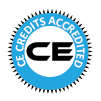
N Akerzoul
Mohammed V University at Agdal, Morocco
Title: Oral squamous cell carcinoma in pediatric Moroccan population: A retrospective study
Biography
N Akerzoul obtained her Doctorate of Dental Surgery (DDS) from Mohammed V University, Morocco. She is the General Practitioner Dentist in Oral Health Center of Guelmim City, Morocco. She is currently a 3rd year Resident Oral Surgeon in Center of Consultation of Dental Treatments of Rabat, Faculty of Dentistry of Rabat, Mohammed V University, Morocco. She also obtained Universitary Diploma of Biostatistics and Research Methodology. She is the author of many International Publications in the field of Oral Surgery and Oral Oncology. She is the International Presenter (Oral & Poster Presenter) in different meetings of Oral Surgery and Head & Neck Oncology in Turkey and the USA. She serves as the Editorial Board Member in Department of Oral and Maxillofacial Surgery of the International Journal of Oral Health and Medical Research (IJOHMR) and also Journal of Cosmetology and Orofacial Surgery. She is a Reviewer in OMICS GROUP Biomedical Journals.
Abstract
Purpose: Study the epidemiological and histopathological profile of the oral cancers in children in care at the Pediatric Hemato-Oncology, Stomatology and Maxillofacial Surgery departments at the 20 August Hospital in Casablanca and at the Hospital of children in Rabat. Our aim is to define the importance of the pediatric oncology, especially the one affecting the oral cavity and also to describe the oral cancers in children, their frequencies and their histo-pathological characteristics. We collected 71 patients’ consultation records and files between 2004- 2012. Materials & Methods: This is a retrospective study of 126 children hospitalized between 2010 and 2013 of the Pediatric Hemato-Oncology Department, Stomatology and Maxillofacial Surgery department at the 20 August hospital in Casablanca and also in the Pediatric Hemato-Oncology Department at the hospital of children in Rabat and in which we diagnosed a confirmed cancer of the oral cavity. Results: In our sample, all age groups were affected by the disease process, but ages between [0-4] years and [13-16] were the most affected with an average age of 8 years and extremes ranging from 4 months to 16 years. In our population sex sample, we noted a slight female predominance with 50.7% of cases. Non-Hodgkin lymphoma Burkitt was the most common histological type with 35.2% of cases. Cheeks represented the most frequent localization with 37.9% of cases, while the maxillary represented 19.7% of cases. Chemotherapy has been the exclusive therapeutic strategy most used in our sample in 67.6% of cases. Conclusion: Epidemiological, clinical and pathological characteristics of cancers of the oral cavity in our population are not different from the literature data. However, the parents’ lack of awareness and late diagnosis of these lesions appear to be responsible for the dramatic profile of oral cancers.

Seon-mi Kim
Chonnam National University School of Dental Science, Gwangju, Republic of Korea
Title: Title: The effects of propolis and MTA on odontoblastic differentiation in dental pulp cells
Biography
Dr. Seon-mi Kim has graduated in 1992, has completed master's degree in 1995, and has completed her PhD in 1998 from the dental school in Chonnam National University, South Korea. She has published large number of papers in renounced journals, and she is actively involved in clinical pediatric dentistry.
Abstract
Propolis has been widely used as a traditional medicine for broad purposes including infection and inflammation control and recently used as an alternative capping materials. However, the potential of propolis as an odontogenic inducer in dental pulp cells has not yet been studied. Therefore, this study aimed to evaluate effects of propolis or combined propolis and mineral trioxide aggregate (MTA), used as an effective pulp-capping material, on odontoblastic differentiation in dental pulp cells and their possible mechanism. Dental pulp cells were isolated from the extracted teeth for orthodontic purposes. Cell viability was monitored for any toxicity of MTA and propolis, based on tetrazolium salts. The odontoblastic differentiation was assayed by alkaline phosphatase (ALP) staining and expression of odontoblast-specific cell differentiation marker genes using real time PCR. Mineralization was identified with Alizarin Red staining. To observe the involvement of ERK signaling in their effects, western blot analysis was performed. MTA and propolis upregulated expression of dentin sialophosphoprotein (DSPP) and dentin matrix protein 1 (DMP-1), odontoblast differentiation markers, and facilitated mineral nodule formation, indication of calcium deposits required for dentin formation. The treatment of MTA, propolis or combination increased the phosphorylation of ERK, known to odontoblast differentiation mediator. However, increased calcium deposits in combined MTA and propolis were attenuated by U0126, an inhibitor of ERK. Taken together, this study suggested that combined propolis and MTA promoted dental pulp cell differentiation and mineralization in human pulp cells via ERK signaling pathway.














